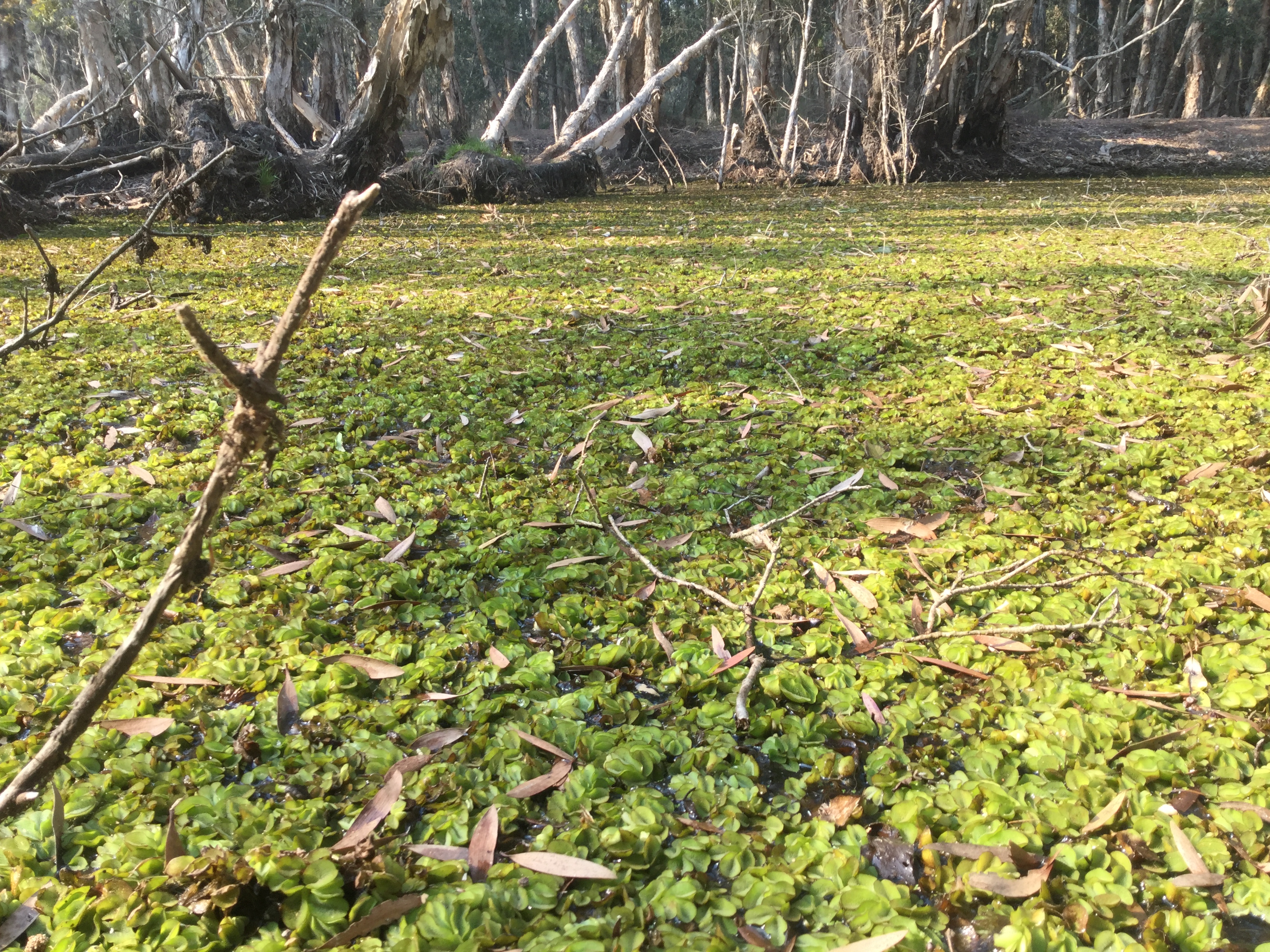When it comes to the many weeds we deal with in the North Coast region, water weeds are in a class of their own regarding spread, impact and control.
NSW Department of Primary Industries (DPI) lists 37 different water weeds in the WeedWise app, more than half of which are present in the Hastings region. The DPI has a state weed program specifically for water weeds, and the illegal trade of some weeds like Frogbit, Salvinia and Water hyacinth is part of a NSW Crime Stoppers campaign.
Unfortunately, most water weeds are introduced deliberately through the nursery and aquarium industry for ornamental display.
They are then spread deliberately or accidentally into nearby waterways and may spread further by boating, fishing, water birds & animals and floods.
Once water weeds enter a lake, dam or waterway they can grow and spread rapidly. For example, Salvinia infestations can double in size every 3 days in ideal temperatures!
Water weeds are generally classified into 3 groups – floating (roots simply float in the water), emergent (plants are rooted and grow above the water surface) or submerged (plants are rooted and grow beneath the water surface).
Once established, water weeds can choke out water bodies affecting boating, recreation, irrigation and animal access. They can also degrade water quality, block sunlight, lower oxygen levels and alter habitat for other aquatic life.
Dams and waterways become effectively unusable and lifeless once fully infested by water weeds, and management becomes very intensive and costly.

Management is most effective when started early. Learn to recognise water weeds by visiting or downloading NSW WeedWise, or download the water weeds poster from the bottom of our Reporting weeds page.
Report suspected water weeds to Council’s Biosecurity Officer, and practice good vehicle and equipment hygiene whenever you visit our rivers, creeks, lakes and dams to ensure that you don’t spread weeds to new areas.






